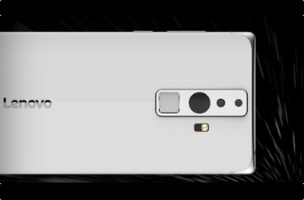Prototypes of Lenovo’s Tango device
Consumer electronics company Lenovo has announced it is developing the first smartphone to include Google’s Project Tango 3D-mapping technology. The company does not have a final design for the device, but they have announced that it will cost less than $500 and debut during summer 2016.
Though the smartphone will include a number of cutting-edge sensor technologies, it is likely to be marketed toward the consumer market rather than the professional market.
Lenovo’s official statement focuses on the ways consumers would use a mobile device equipped with 3D-mapping tech, explaining that app developers can use the hardware to “transform your home into a game level, or create a magic window into virtual and augmented environments. Project Tango-enabled devices can recognize places they’ve been before, like your living room, the office, or public spaces. Unlike GPS, Project Tango motion tracking works indoors, allowing users to navigate precisely through a shopping mall, or even find a specific item at the store where that information is available. Using the sensor in the device, Project Tango devices can also capture the 3D dimensions of the room, giving measurements that can be used to help you when shopping for furniture or decorations.”
Though Lenovo’s announcement makes no mention of professional use cases for the device, that doesn’t mean the device will be useless for the professional market. It is important to note, for instance, that the Mantis Vision technology included in Google’s Tango platform is also used in a number of scanners for the professional market, including Mantis Vision’s own handheld scanners the F5 and the PocketScan 3D.
The last important piece of information for the professional market is that Lenovo is inviting developers to “help grow the Project Tango app ecosystem” by developing apps that exploit Google’s advanced technology. While most of the apps will be intended for consumers, it is likely that some of these apps could be very useful for professional applications such as making measurements in the field, or producing augmented reality presentations that lay digital data on top of real world conditions.
“With Project Tango, the smartphone becomes a magic window into the physical world by enabling it to perceive space and motion that goes beyond the boundaries of a touch screen,” said Johnny Lee, Project Tango Lead, Google. “By working with Lenovo, we’ll be able to make Project Tango more accessible to users and developers all over the world to both enjoy and create new experiences that blends the virtual and real world.”






